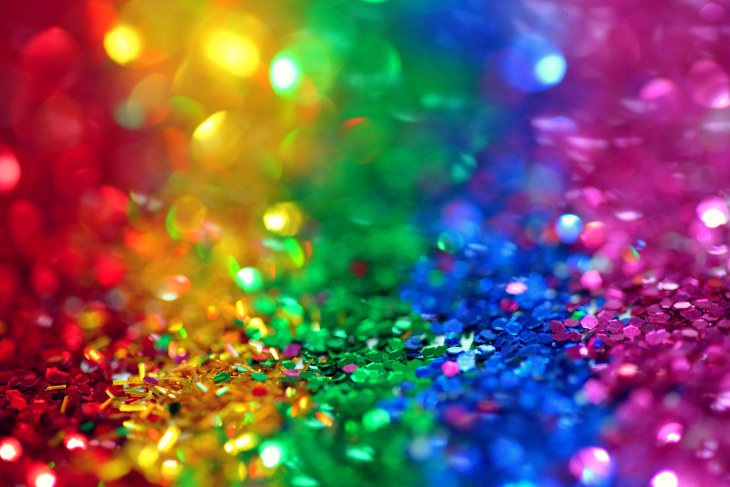Color psychology involves how certain hues influence how people feel and cause behavioral shifts. You probably already use colors in marketing to support aims like better brand recognition and improved visibility on mobile devices, and those are valid goals.
However, as the seven color psychology examples below will illustrate, you could also use carefully chosen tones and tints to make people eager to buy merchandise or at least have more favorable opinions of your brand.
Succeeding with color psychology is not as simple as choosing appealing hues.
Here are some actionable ways to use different shades wisely when the primary goal is to boost sales figures:
1. Choose Colors Based on Your Target Demographic
The ways people connect specific colors with particular meanings are not as straightforward as you may think. Knowing this could make a difference if your primary aim is to target a certain age group.
A 2017 study conducted on behalf of Sherwin-Williams found that millennials and baby boomers associate the same color with different things. Millennials were more likely to associate green with energy, while older people felt it conveyed calmness.
Marketers should keep those differences in mind when figuring out what emotions they want consumers to associate with a brand. The study investigated house paints, but you could apply these results when trying to encourage sales upticks for merchandise ranging from clothes to candy. Spend time learning about the shade-specific associations linked to your desired demographic, then use colors in marketing based on those findings.
2. Ensure That Colors for Products Shown on a Website Look the Same Upon Delivery
People use appearance-based perceptions to shape expectations about products, research shows. A 2018 study found that color is an effective way to catch attention and motivate purchases. The research team polled several thousand participants around the world to learn how packaging impacted product satisfaction when shoppers bought health, beauty and personal care products.
The results showed 46% of consumers expected products purchased online to look the same when they arrived on their doorsteps. Customers with concerns about color consistency are more likely to assume that something is wrong with the items or that they are counterfeit goods. Another statistic indicated that 22% of people who returned goods due to product packaging did so because the color looked wrong.
These conclusions emphasize how important it is for companies to utilize color measurement resources to meet customer preferences or ensure adequate quality control for physical products. Bear in mind, too, that the way you show colors online could foster false perceptions. For example, aim to display products precisely in the formats people will receive them, such as presenting an eyeshadow in its case rather than represented as a color swatch.
3. Understand How Colors Can Affect Perceptions of Places and Environments
Using particular hues can have both negative and positive effects on how people feel. A 2014 study investigated the impact of colors on college students’ moods as they spent time in a university commons complex.
Some shades made individuals feel restless, while others fostered an increased sense of enjoyment. Some respondents also said that inviting pigments made them feel excited about approaching a campus building featuring those hues.

The researchers cautioned that an array of factors, such as culture, the amount of light in the environment and adjacent hues, could also influence how colors make people feel. Despite those numerous variations potentially affecting the outcome, marketers should evaluate the effects of certain color choices concerning how people interpret their surroundings. Doing that could be especially important for in-person marketing events that require a welcoming tone.
4. Select the Right Intensity for the Emotion You Want to Trigger
Color psychology can support any specialized marketing tools you use, such as customer relationship management interfaces. For example, when engaging in email segmentation, you probably already send different messages to consumers based on things like their preferences or customer history.
Science shows it may also be wise to segment according to whether you want people to feel relaxed or excited based on the product sold. An associate professor at Rutgers University—Camden explained that the intensity of color influences specific generalized responses. A highly saturated hue, such as a bright red, is more likely to make someone feel excited than a pastel shade like robin’s egg blue or seafoam green — both of which typically soothe.
Maybe you operate an e-commerce store that sells a wide variety of products associated with people’s homes and lifestyles. If you send an email to promote an aromatherapy kit to help individuals unwind, consider using a desaturated template. If the goal is to drive sales of a home brewing kit for beer lovers, a brighter email palette could stimulate the eagerness to learn something new and have delicious drinks to show for it.
5. Determine the Existing Desire for Certain Colors
Color psychology efforts have a better chance of paying off if marketers understand the current sentiments for the hues people may choose. A recent study about preferred shade for vehicles found that about 39% of car owners globally like white the most, but the rest of the results show a more nuanced breakdown of favorites.
People in the United States echo the worldwide desire for white, and they prefer colors with bluish undertones or pearl-like effects when buying luxury cars. If consumers are in the market for pickup trucks, though, they want black or red. Marketers think that’s because they associate those colors with an upscale look.
The preferences changed in other parts of the world, though. For example, nearly every fourth car in Europe primarily featured achromatic color, the data showed. Thus, marketers targeting consumers in the U.S. or elsewhere should aim to boost sales by researching current feelings about particular aesthetic options before making conclusions.
6. Choose the Right Colors for Consumables
If marketers are trying to select a color for a food or beverage, they must do it with care. Taking a haphazard approach could hurt its sales potential.
Research indicates that people learn color-taste associations throughout life, and those could impact their expectations about how something will taste. Humans can form new links between hues and anticipated tastes, but that change happens less readily in some individuals versus others.
A similar outcome happened when people drank beer. Scientists determined that consumers created price perceptions about the beverage based on its color. They expected to pay more for dark beers compared to lighter options.
Marketers should consider looking at similar products and checking out their colors before selecting hues for new consumable goods. Colors in marketing also matter for items that consumers do not eat or drink, of course.
Since people naturally draw conclusions about the goods that go directly into their bodies, marketers should do what they can to ensure the perceptions match the realities. Otherwise, a mismatch could have a jarring effect or make buyers feel misled. Think of how some companies sell food products in unrealistic colors to make picky kids eat them. That works well for youngsters, but if an adult sees a neon orange drink sold as an apple flavor, they might raise their eyebrows.
7. Learn About Environmental Differences and Color Perceptions
We saw earlier that color preferences for vehicles differ by region. Some researchers also identified geographical differences based on color-driven mood influences. They sought to find out if the color yellow had a universal happiness-boosting effect on people.
The study’s outcomes revealed the hue’s ability to cause happy feelings varied based on location specifics. They included the amount of rainfall in the area and distance lived from the equator.
Marketers should keep those things in mind, especially if running international campaigns. Teams cannot expect specific colorful tones to have universally desirable effects. Besides the environmental differences at play, a person’s culture and life experiences could affect what some shades mean to them.
It is possible, however, to select colors that have the highest chances of positive reactions. Taking the time to learn about the intricacies of countries and their inhabitants can facilitate a strong start in that endeavor.
Color Psychology Examples to Guide Your Efforts
These suggestions should be compelling enough to convince you that color often persuades a person to buy something or decide to hold onto their money. The science-backed results here are not universally applicable, however.
Always invest some time in researching color-based preferences in their specific target segments. External research can inform your approach, but it doesn’t guarantee particular results. Improve your methods by turning to internal statistics about your customers, too.


